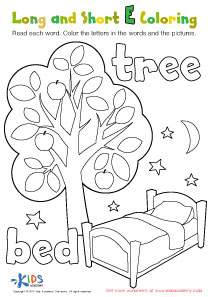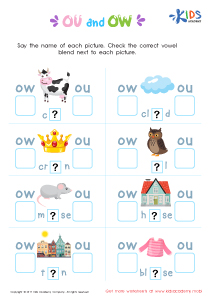Normal Vowel Diphthongs Worksheets for Ages 3-9 - Page 2
25 filtered results
-
From - To


Reading: EA as in Bread Worksheet
Normal vowel diphthongs play a crucial role in early language development for children aged 3-9. Understanding diphthongs, which are sounds formed by the combination of two vowel sounds in one syllable, is essential for several reasons. Firstly, mastering these sounds enhances children's phonetic awareness, which is foundational for reading and writing skills. When children recognize and articulate diphthongs correctly, their decoding and spelling abilities improve, giving them a stronger grasp of language.
Secondly, normal vowel diphthongs contribute to clear speech and effective communication. Children in this age group are still refining their pronunciation; therefore, familiarizing them with diphthong sounds aids in developing articulate speech patterns. This boosts their confidence in verbal interactions, enhancing social skills.
Lastly, parents and teachers must be aware that exposure to these sounds through playful activities—like songs, rhyme games, and storytelling—makes learning enjoyable and engaging. Encouraging recognition and application of diphthongs in a fun context captivates children's interest and fosters a love for language that can flourish in their educational journey. Overall, focusing on normal vowel diphthongs nurtures a child’s linguistic foundation, empowering them for future academic success.

 Assign to My Students
Assign to My Students










